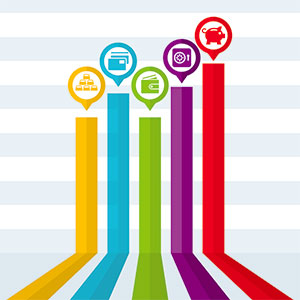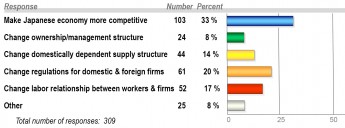Firms focus on growth; Abenomics cited as factor behind outlook
This year’s autumn Foreign Chambers in Japan Business Confidence Survey reveals that most of the 278 respondents remain bullish on the Japanese economy.
The poll, conducted between 16 and 25 October, garnered responses from 16 foreign chambers. The results show that the respondents were slightly less optimistic than in the previous survey, conducted in April.
The Japanese economy was expected to show continuous improvement over the next six months according to the replies, of which 84% indicate that some upturn was anticipated. This level of growth is slightly lower than respondents’ estimates in the previous survey, however.
Sales performance over the past six months was at the highest level seen since the Spring 2007 survey.
Further, the poll results indicate that increases in sales and profitability since the April survey are partly due to the weakening of the yen.
Sales forecasts for the coming six months are more optimistic than they were in April. Like the survey results for sales performance, these forecasts were the highest recorded since the Spring 2007 poll.
Respondents’ positive sentiments are also reflected in the strategies of foreign-affiliated companies in Japan. At present, 79% of these firms are pursuing growth strategies and only 3% are planning to downsize.
Abenomics was cited as a top factor behind respondents’ positive outlook and the recent changes in business performance.
According to one respondent, “Abenomics has sent a clear message that [Prime Minister Shinzo] Abe’s cabinet will change Japan. So far, it has succeeded in improving the economic situation, including exchange rates, stock prices and consumption. The Japanese economy is picking up steadily”.
The subsidies policy of the Japanese government and a renewed focus on Japan were also cited as factors affecting business performance.
Full report:
http://www.fcc.or.jp/fcij/bcs.html






